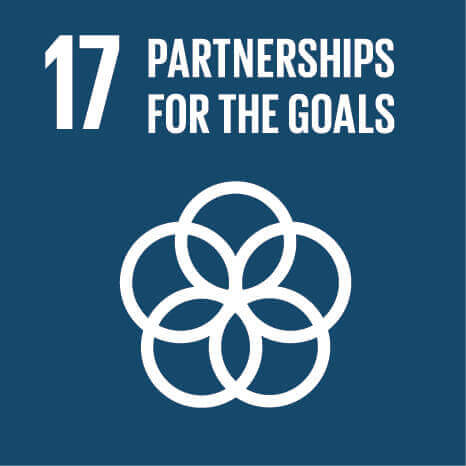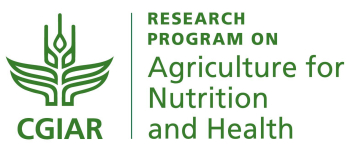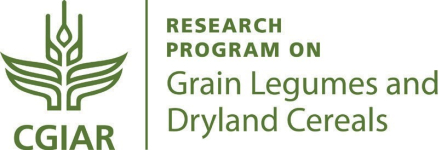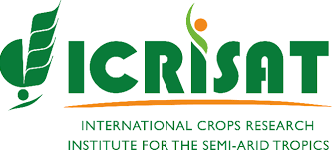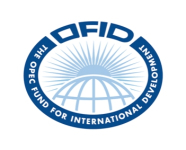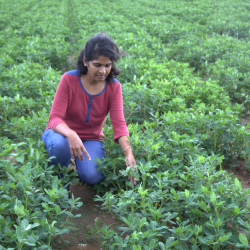High oleic groundnut varieties commercialized in India meet the enhanced shelf-life needs of food industry and consumer health benefits.
Published on: April 6, 2021, Submitted by Jake Carampatana on: March 24, 2021, Reporting year: 2020
High oleic groundnut varieties are preferred by food processing industry for enhanced shelf-life benefits and has consumer health benefits. The process innovations in breeding and testing pipeline resulted in commercialisation of high oleic cultivars in India in 8-years of time as against the normal 12-15 years. The partnership between the national program in India and ICRISAT, and long-term donor support was critical for the success. ICRISAT has shared the high oleic lines with nine countries in Africa and Asia.
Two groundnut varieties among technologies launched by Indian PM
International Crops Research Institute for the Semi-Arid Tropics (ICRISAT) in collaboration with national partners in India, Directorate of Groundnut Research (ICAR-DGR) and State Agricultural Universities (SAUs) developed and commercialized high oleic groundnut varieties to meet the market needs. The high oleic groundnuts are bred in Spanish and Virginia Bunch growth habits that are suitable for cultivation in Asia and Africa. The oleic acid concentration in high oleic groundnuts is 80+2% as against 45-50% in normal groundnuts. Marker Assisted Selection (MAS) and Marker Assisted Backcross (MABC) approaches were used for early generation selection of FAD mutant alleles.
High oleic groundnuts offer longer shelf-life benefits to food processing industry, health benefits to consumers and increases profitability to farmers through premium price compared to normal peanuts. After prioritising the developement of high oleic groundnut varieites to meet market needs in India, a breeding program was initiated in 2011 resulting in commercialization of two high oleic cultivars, Girnar 4 (ICGV 15083) and Grinar 5 (ICGV 15090) in India. They are the first high oleic cultivars of groundnut to be commercialized in India.
Process innovations in breeding and testing pipeline that include, high through phenotyping for kernel fatty acid profile using Near Infrared Reflectance Spectroscopy (NIRS), genotyping using cost-effective SNP markers, and rapid generation advancement under semi-controlled conditions, target site multi-location testing resulted in enhanced rate of genetic gain for high oleic trait. As a conseqeunce, the high oleic groundnut cultivars are identified commercializaion in 8-years since the hybridizaiton in 2011 as against 12-15 years required. In national testing under AICRP-G (All India Coordinated Research Project on Groundnut), Girnar 4 and Girnar 5 recorded 41-57% and 37- 52% higher pod yield, respectively over the national checks, TG-37A and GPBD-4.
ICRISAT's partnership with ICAR-DGR and SAUs through the conception and development of the strategy to develop high oleic groundnut cultivars in India and long-term donor support were critical for the successful commercialization of high oleic groundnut cultivars in India.
High oleic groundnuts have high demand in both domestic of India and international markets for enhanced shelf-life and consumer health benefits, hence a prioritized by ICRISAT's gorundut breeding program.
A sound and fast track breeding strategy that involved genotyping at early generation using molecular markers, phenotyping at later generations for recurrent parent phenotype and high oleic trait, rapid generation advancement in glasshouse to increase the number of cycles per year resulted in development and commercilaiziton of agronomically superior high oleic groundnut lines within a short span of 8-years as against the normal 12-15 years. Robost non-destrucitve near infrared reflectance spectroscopy (NIRS) was extensively used to assess the fatty acid profile and oil content of kernels, and for early generation selection cost-effective SNP markers and allele specific markers were used to select the two FAD mutant alleles.
ICRISAT's partnerhip with ICAR-DGR and SAUs through the conception and development of high oleic groundnut cultivars in India to meet the market needs was supported by Department of Agriculture, Cooperation and Farmer Development (DoAC&FW) of Government of India resulting in long term strategic investment by DoAC&FW. The two key elements that satisfied the interest of the donor are (a) emerging domestic market demand for high oleic peanuts in India, and (b) increased use of peanuts for food and confectionary in India.
The partnership was built to leverage research and infrastructure capacities of partner institutes like NIRS phenotyping, genotyping and rapid generation advancement at ICRISAT, target site and multi-location testing of ICAR-DGR and SAU’s, and national testing coordinated by ICAR-DGR. ICRISAT could also bring the global experience on genetic purity concern of high oleic value chain from USA and Australia.
The networks of ICRISAT nurtured over several decades enabled the NARS from different countries to access the high oleic groundnut breeding lines from ICRISAT; 93 high oleic lines were shared with partners in Asia (Bangladesh, Myanmar, and Vietnam), and 115 lines to Africa (Ethiopia, Nigeria, Mali, Malawi, Tanzania and Uganda) and four lines were shared with Australia.
Partnerships and communication were critical for the successful deployment of the innovation. Partnership with industry helped us to get the feedback on sensory and product suitability for processing so that the right product is advanced. Engagement with public and private seed producers was established through communication to scale-up seed chain and ensure genetic purity. Donor engagement was important to sustain the financial assistance from 2011 to 2018.
Stage of Maturity and Sphere of influence
-
Stage of Maturity: Stage 2
-
Contributions in sphere of influence:
1.4.3 - Enhanced genetic gain
2.1.1 - Increased availability of diverse nutrient-rich foods
Acknowledgement
1. Financial assistance from (a) Department of Agriculture, Co-operation and Farmer Welfare (DoAC &FW) of Goverment of India (b) OPEC Fund for International Development (OFID), (c) MARS Inc and (d) CRP-GL and CRP-GLDc.
2. Research collaboration with ICAR-DGR, SAUs and national partners from Asia and Africa.
3. Multi-disciplinary team at ICRISAT supported the breeding and testing of high oleic groundnut lines.
4. ICRISAT's long term networks with global peanut community, national partners in Asia and Africa and peanut industry.



